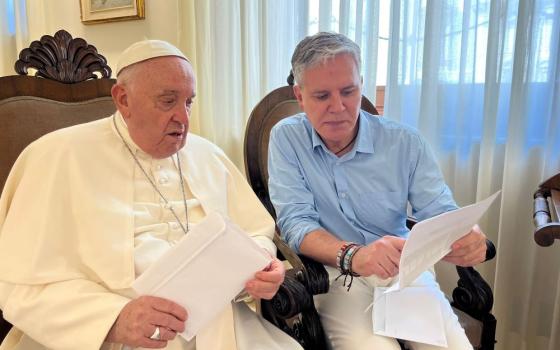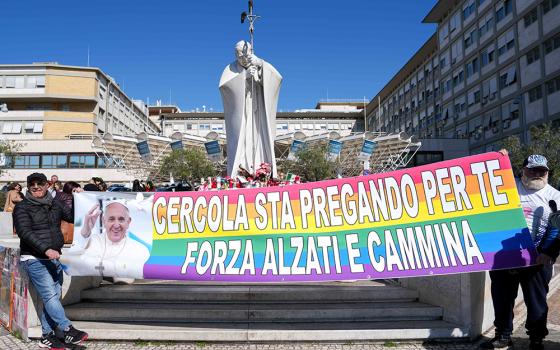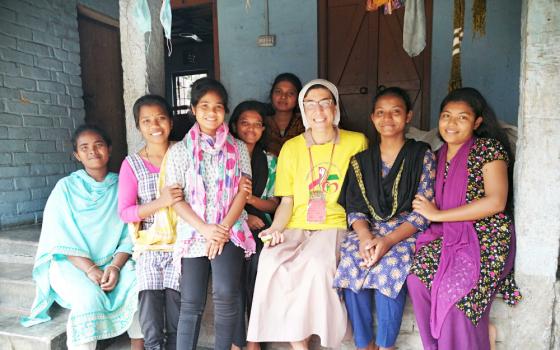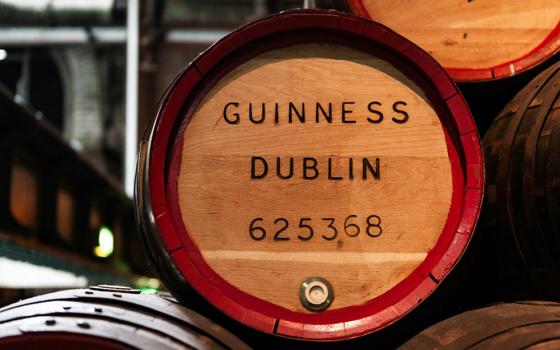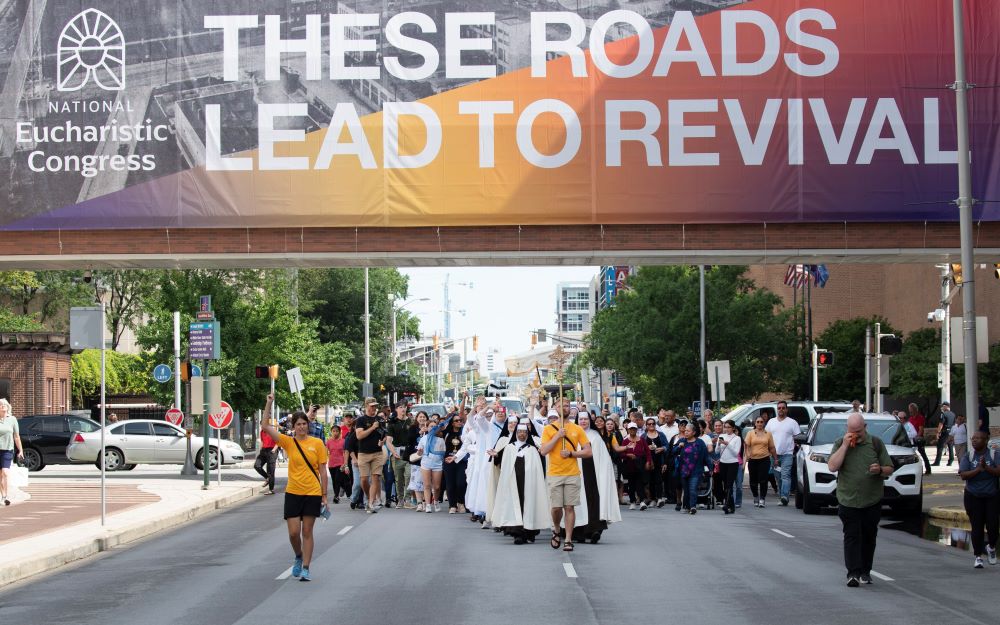
Pilgrims on the final leg of the National Eucharistic Pilgrimage's Seton Route, which launched May 18 in New Haven, Conn., arrive for a welcome Mass at St. John the Evangelist Church in Indianapolis July 16, ahead of the National Eucharistic Congress. (OSV News/Bob Roller)
They walked for two months.
Through big cities and small towns. In comfortable spring conditions, sweltering 90-degree summer heat, and rain. They saw the skyscrapers of New York City, the Rocky Mountains, the Gulf Coast and the grassy plains of Kentucky.
The eucharistic pilgrims who set out from four different starting points in the United States on May 19 slept with host families, as well as in monasteries, retreat centers and convents. Accompanying the Eucharist exposed in monstrances, they walked up to 19 miles on some days on a journey that will end with the National Eucharistic Congress in Indianapolis.
"The two biggest challenges are the heat and exhaustion. We have a very busy and physically demanding schedule," said MacKenzie Warrens, who lives in the Archdiocese of Galveston-Houston. She walked the St. Juan Diego Route — which began in Brownsville, Texas — of the National Eucharistic Pilgrimage.
"I want to take Jesus to the streets so he can meet people who might never meet him otherwise," Warrens said. She recounted a part of her trip where she and the other pilgrims were crossing from the Archdiocese of Louisville into the Archdiocese of Indianapolis.
"The remnants of Hurricane Beryl were making their way through Kentucky and Indiana," she said. "We were under a tornado watch and there were major thunderstorms not very far away. Despite the threat of severe weather and nowhere to take shelter if a storm hit on the bridge, about 1,000 people processed across the Big Four Bridge as we entered our final diocese."
'I want to take Jesus to the streets so he can meet people who might never meet him otherwise.'
—MacKenzie Warrens
There were days when the pilgrims — all of them young adult Catholics who are either college students or young professionals — had to dig deep to grind through the physical and mental fatigue.
Chas Firestone East, a doctoral candidate at Columbia University walked the St. Junipero Serra Route from California. He said he hurt his back early in the trip and found himself in Colorado at the front of a procession, carrying a cross up and down a mountain. He prayed for assistance.
"Somehow through the grace of God, I went up and came down the entire mountain. That cross never felt so light," East told reporters during a July 16 press conference in Indianapolis.
Other pilgrims credited divine grace for sustaining them on their journeys, which often included evening social events after long grueling days on the road.
Advertisement
"I was crying. I was just overjoyed,” Amayrani Higuelo told NCR, describing her emotions when she and her fellow pilgrims arrived in Indianapolis on July 16, a day before the National Eucharistic Congress begins here.
Higuelo, a Philadelphia resident who recently earned her nursing degree, followed the St. Elizabeth Ann Seton Route, which began in New Haven, Connecticut, and traversed through Washington, D.C., Baltimore, Philadelphia, and Steubenville, Ohio.
The fourth path, the Marian Route — named for its visit to the National Shrine of Our Lady of Champion in Wisconsin — departed from the headwaters of the Mississippi River in Minnesota and crossed through the Midwest.
Along the way, the pilgrims participated in eucharistic processions, holy hours, special liturgies and other religious events with local communities. They visited shrines, cathedrals and Catholic universities. They processed through rural towns and big cities, and accompanied the Eucharist on boats that traversed local rivers.
"We were literally on the boat with Jesus," Higuelo said. Those experiences helped to illuminate the Gospel stories of Jesus' ministry for her in a more personal, profound way, she told NCR.
"Those were some of the most beautiful and more intimate moments we had with Jesus," Higuelo said.
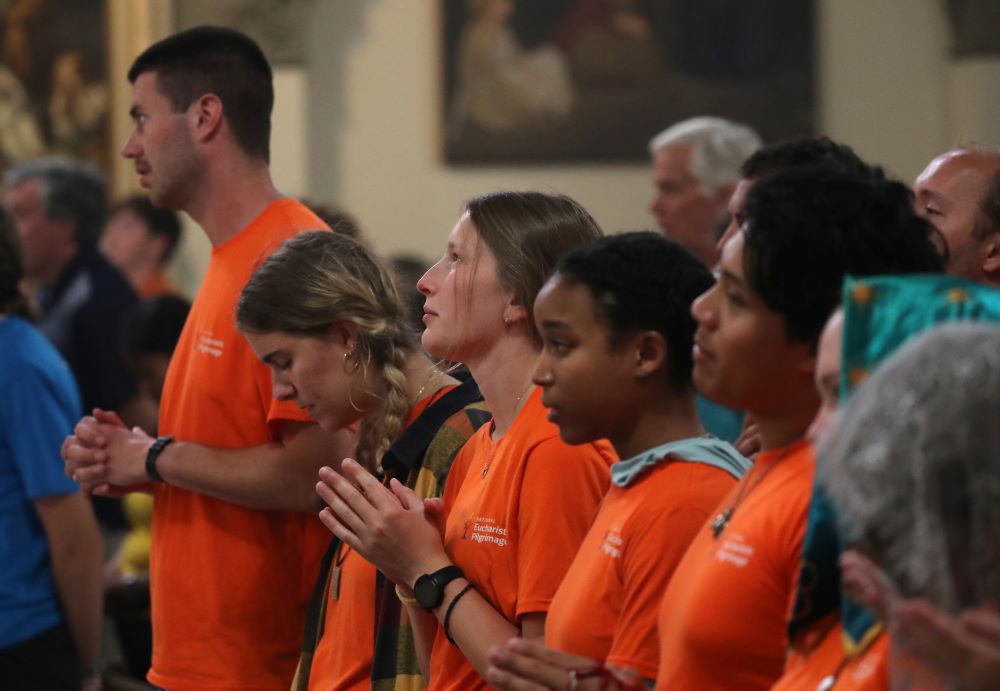
Shayla Elm, a perpetual pilgrim with the Juan Diego Route (center, looking up), prays with others from her group at a Mass to welcome pilgrims at St. John the Evangelist Church in Indianapolis July 16, ahead of the National Eucharistic Congress. (OSV News/Bob Roller)
Like the other pilgrims, Warrens completed an application and interview process. She first heard about the pilgrimage from her father, who helped coordinate the St. Junipero Serra Route's stop in Kansas City, Missouri, for two years.
"When I heard about the pilgrimage, I felt the Lord inviting me to be the Holy Spirit's instrument as he works in hearts to bring about personal, transformative encounters with our eucharistic Lord," said Warrens, who plans to become a consecrated virgin in January 2025.
The pilgrims who completed the four routes will converge at Lucas Oil Stadium for the National Eucharistic Congress' opening ceremony July 17. The ceremony will feature a large procession culminating in Crookston, Minnesota, Bishop Andrew Cozzens carrying the Eucharist in a large monstrance. An estimated 50,000 people in attendance are expected to then fall silent for adoration.
That moment, Higuelo expects, will be a powerful end to a journey she will remember for the rest of her life.
"There will be a lot of tears for sure," she said.

